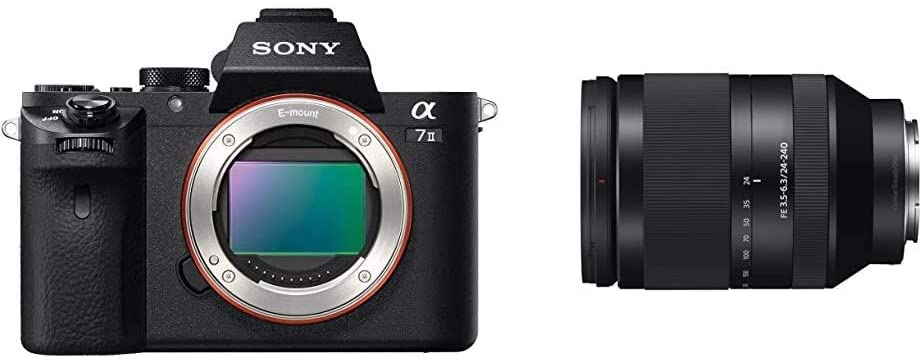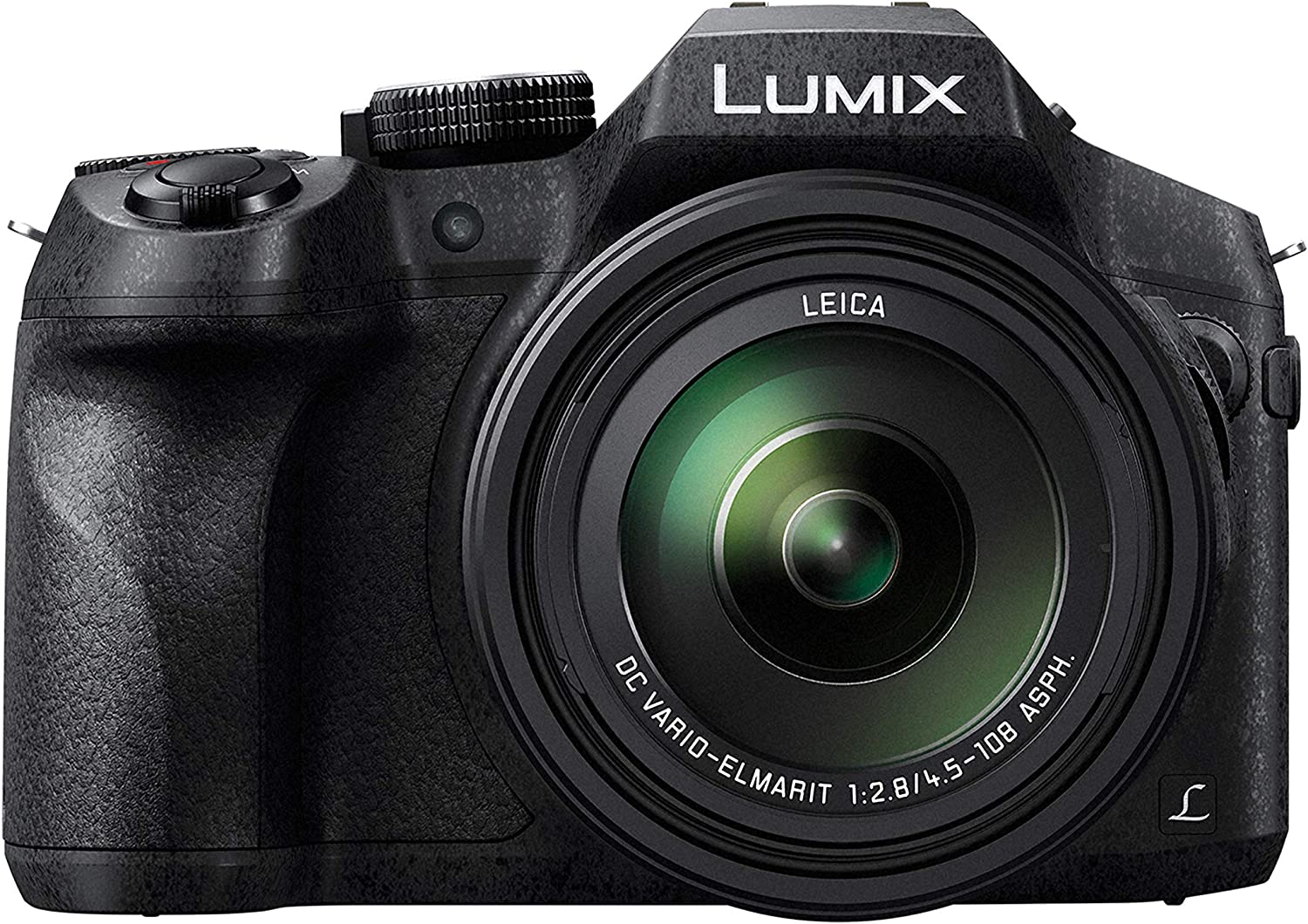The best cameras for hunters
As we stepped out of the truck and into the cool morning air, I could feel a strange nervousness building.
I am not a hunter, I don’t advocate sport shooting, but ever since I moved to the countryside I had developed a new appreciation for conservation and the importance of maintaining the local deer population.
As is often the way in the UK, strange protection laws have created an imbalance in the local wildlife population. With no natural predators, foreign breeds of deer have become out of control and devastate the local ecology.
I was keen to find out more and by pure chance the guy who came to clean my pond was part of a wildlife support group and a professional game keeper. He was more than happy to show me what they were doing to improve things.
As we walked through the dense forest, Dave explained the importance of sustainability in hunting to me. He told me that we were not just out here to look for and kill a deer, but to investigate, report and then decide what to do. It’s a very considered approach to forestry management. Without hunting, deer populations can quickly grow out of control and wipe out important vegetation and habitats.
This was clear from the riverbanks.
Deer eat new shoots that develop and consequently there are no new trees to support the riverbank, and it collapses. The great work in Yellowstone Park in America helped prove this.
As we crept quietly through a spinney, Dave pointed out a pair of deer in the distance. I mean way, way in the distance. We thought we were being super clever in the cover, but the deer had spotted us and already run a mile.
My intention on this jaunt was not only to understand the way the countryside is managed, but also to understand how to photograph these magnificent animals in the wild.
It was quite a learning experience.
After this I followed Dave on numerous other tracking events and bird shoots to deepen my knowledge. I’m glad I can write this article from lived experience, I hope you find it useful.
How to choose the best camera for a hunt
The main considerations in your selection should be:
Noise Levels: Choose a camera that has a quiet shutter or a silent shooting mode, so as not to startle the deer or any other animals in the area. Mirrorless cameras can shoot in complete silence, but many have an issue when shooting objects that move quickly. Mirrorless cameras are brilliant for shooting static animals, but if you want to capture movement DSLRs are the way to go.
Image Stabilization: Look for a camera with good image stabilization to help keep your shots steady. This is especially important if you’re shooting with a longer lens, as even the slightest movement can cause blur in your photos.
Portability: A lightweight and compact camera is ideal for hunting, as you’ll be carrying it with you for long periods of time. Consider a mirrorless camera or a compact DSLR with a small lens.
Lens: Choose a lens with a long focal length, as this will allow you to capture wildlife from a safe distance without disturbing them. A telephoto lens with a focal length of at least 200mm is recommended.
Low Light Performance: Deer stalking often takes place at dawn or dusk when the light is low, so choose a camera with good low light performance. Look for a camera with a wide aperture lens (f/2.8 or wider) or a camera with a large sensor that performs well in low light.
Weather Resistance: Hunting can take you through various weather conditions, so choose a camera that is weather-sealed to protect it from rain, dust, and other elements.
Battery Life: A camera with good battery life is essential for long hunting trips. Consider bringing extra batteries or a portable charger with you.
Shooting Speed: Look for a camera with a fast burst rate to capture quick movements of animals or deer. A camera with a burst rate of at least 6 frames per second is recommended.
Video Capability: If you want to capture video footage of your hunts, look for a camera with good video capabilities. Look for a camera that can shoot in 4K resolution, has a microphone input, and has image stabilization for smoother video.
Price: Set a budget for your camera and lens and stick to it. While high-end cameras and lenses may offer the best performance, they can also be expensive. Consider purchasing a used or refurbished camera to save money.
Top Cameras for Hunters
Nikon COOLPIX P1000

The Nikon COOLPIX P1000 is a versatile superzoom camera that offers an impressive 125x optical zoom, allowing you to capture stunning close-ups of their subjects from a safe distance. With its 16 MP sensor and powerful image stabilization, the P1000 delivers sharp, high-quality images, even in low-light conditions.
Pros:
- Incredible 125x optical zoom
- Solid image quality with image stabilization
- Vari-angle LCD and built-in electronic viewfinder
Cons:
- Bulky and heavy compared to other options
- Autofocus can be slow in low-light situations
Ideal Use Cases: The Nikon COOLPIX P1000 is perfect for anyone who wants a versatile camera with an exceptional zoom range, allowing them to capture detailed images of their subjects from a distance.
Check out its ridiculous Zoom range in this video:
Canon EOS 90D

The Canon EOS 90D is a powerful DSLR camera with a 32.5 MP sensor and a fast autofocus system, ensuring excellent image quality and performance. Its weather-sealed construction provides durability and protection against the elements, making it an ideal choice for use outside. The 90D also features a 10 fps continuous shooting mode, allowing you to capture fast-moving wildlife with ease.
Pros:
- High-resolution 32.5 MP sensor
- Fast autofocus and 10 fps continuous shooting
- Weather-sealed construction
Cons:
- Bulky and heavier than mirrorless options
- Requires additional lenses for versatility
- To get the same Zoom as the Nikon you’d need to spend big bucks.
Ideal Use Cases: The Canon EOS 90D is a fantastic choice for those seeking a durable, high-performance DSLR camera that offers excellent image quality and fast continuous shooting for capturing fast-moving subjects. Whilst SLRs offer great versatility when it comes to lens choice, the problem is, if you want a decent 300mm lens, expect it to be big. Whilst the 90D would be an excellent choice if you wanted a camera that would double up and be used for family pictures and general holiday use, if you’re buying purely for hunting, then the Nikon superzoom is probably the better bet.
Sony Alpha A7 II

The Sony Alpha A7 II is a powerful, full-frame mirrorless camera that has garnered much attention since its release. Offering a range of advanced features, the A7 II delivers excellent performance while remaining relatively affordable compared to its higher-end counterparts. In this review, we’ll take a closer look at the camera’s key features, image quality, and overall performance to determine if it’s the right choice for photographers of all levels.
Design and Build Quality: The A7 II boasts a compact and lightweight design, making it easy to carry around for extended periods. Sony has incorporated a magnesium alloy body, providing a robust feel and weather sealing for added protection against the elements. The grip is comfortable and secure, allowing for easy handling during long shooting sessions.
Key Features:
- 24.3-megapixel full-frame Exmor CMOS sensor
- 5-axis in-body image stabilization
- 117-point phase-detection autofocus system
- 3-inch tilting LCD screen
- Electronic viewfinder (2.36 million dots)
- Full HD video recording up to 60 fps
Image Quality: The A7 II produces stunning images with excellent detail, color reproduction, and dynamic range. The 24.3-megapixel sensor delivers sharp and crisp images, while the BIONZ X processor ensures fast performance and reduced noise in low-light situations. The ISO range of 100-25,600 (expandable to 50-51,200) provides flexibility when shooting in various lighting conditions.
Autofocus and Performance: The A7 II’s 117-point phase-detection autofocus system is fast and accurate, allowing photographers to capture sharp images of moving subjects with ease. The 5-axis in-body image stabilization works exceptionally well, providing up to 4.5 stops of compensation and enabling users to shoot at slower shutter speeds without introducing camera shake.
Video Capabilities: While the A7 II may not offer 4K video recording, its Full HD video capabilities are still noteworthy. With the ability to record at up to 60 fps, users can capture smooth and detailed footage, while the built-in microphone provides decent audio quality.
Battery Life: The battery life on the A7 II is one area that could see improvement. Rated at approximately 350 shots per charge, it’s advisable to carry spare batteries when shooting for extended periods.
Conclusion: The Sony Alpha A7 II is an exceptional full-frame mirrorless camera that offers a great balance of performance, image quality, and affordability. Its compact design, robust build, and advanced features make it a strong contender for photographers looking to upgrade from an APS-C system or enter the world of full-frame photography. While it may lack 4K video capabilities and have limited battery life, the A7 II remains a solid choice for photographers seeking a reliable and versatile camera.
Olympus Tough TG-6

The Olympus Tough TG-6 is a rugged, waterproof compact camera designed for extreme conditions. It features a 12 MP sensor, 4x optical zoom, and is waterproof up to 50 feet, making it perfect for anyone trekking into wet or harsh environments. Its durable construction can withstand drops, crushing, freezing temperatures, and dust.
Why is this camera in the mix with only 4x Zoom?
The reality is a lot of hunters will already have high quality optics for seeing great distances and may just want a camera in their pocket that they can use to take pictures of animal tracks, damage to the environment or maybe even the vegetation. Mobile phones are good, but they’re not waterproof. With this camera you can beat the hell out of it and it will still work. Hunting is so much more than killing an animal, there is a love and appreciation for the environment and some people want to document everything, not just take home trophies.
Pros:
- Rugged, waterproof design
- Good image quality for a compact camera
- Built-in GPS for geotagging
Cons:
- Limited zoom range compared to other options
- Smaller sensor size may impact low-light performance
Ideal Use Cases: The Olympus Tough TG-6 is perfect for those who need a durable, waterproof camera that can handle the most extreme conditions without compromising on image quality.
Panasonic LUMIX FZ300

Pros:
- Impressive 24x optical zoom with a constant f/2.8 aperture
- Built-in image stabilization
- Weather-sealed construction
Cons:
- Smaller sensor size compared to DSLR and mirrorless options
- Limited low-light performance
Ideal Use Cases: The Panasonic LUMIX FZ300 is an excellent choice, with an exceptional zoom range, built-in image stabilization, and weather sealing, it’s perfect for capturing distant subjects and can handle various outdoor conditions, making it a reliable option for documenting a shoot.
Conclusion – My Top Pick for the Best Camera for Hunters
My top pick for the best camera for hunters is the Sony Alpha a6400. While the Panasonic LUMIX FZ300 offers an exceptional zoom range, built-in image stabilization, and weather sealing, the overall image quality, performance, and compact design of the a6400 make it the perfect choice for capturing your adventures.
Of course the annoying answer is always – the ideal camera for your adventures will depend on your specific needs and preferences. But as long as you consider factors such as durability, weather resistance, image quality, zoom range, and ease of use, you can come to a decision that best fits your needs. By selecting the right camera, you can document your experiences without having to worry about whether or not your gear will be able to keep up.
